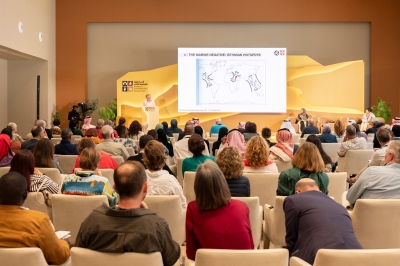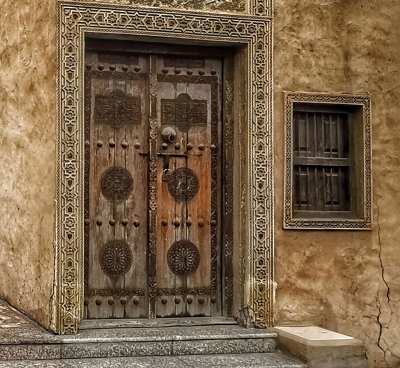
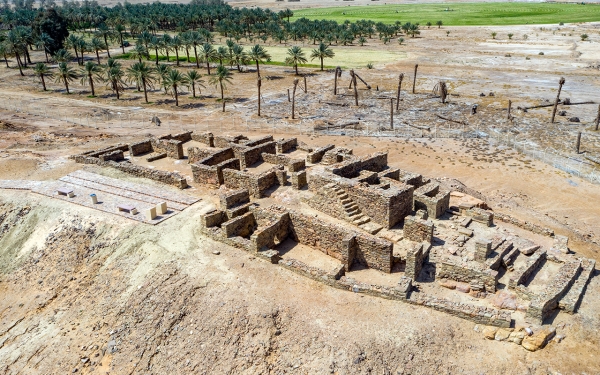
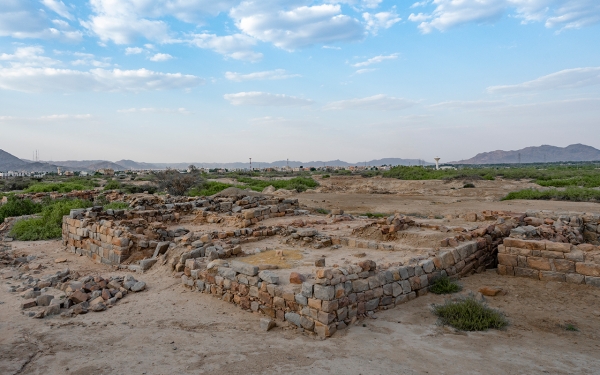
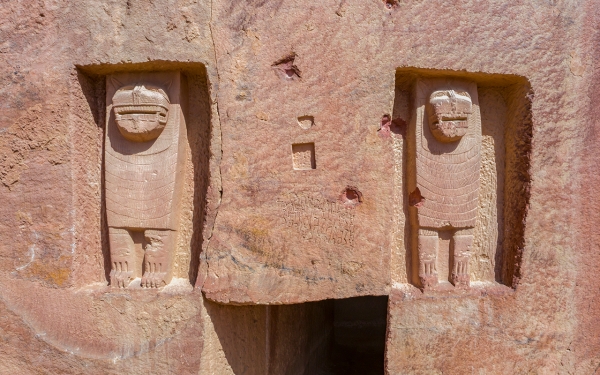
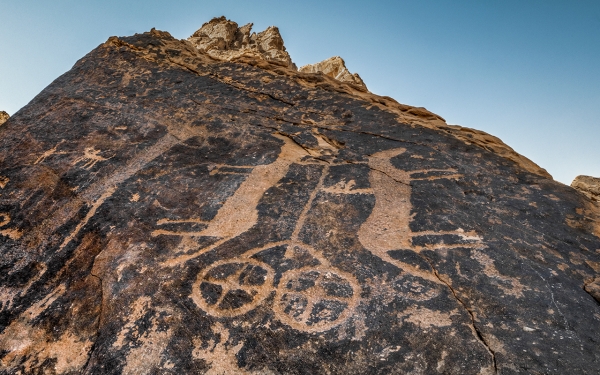
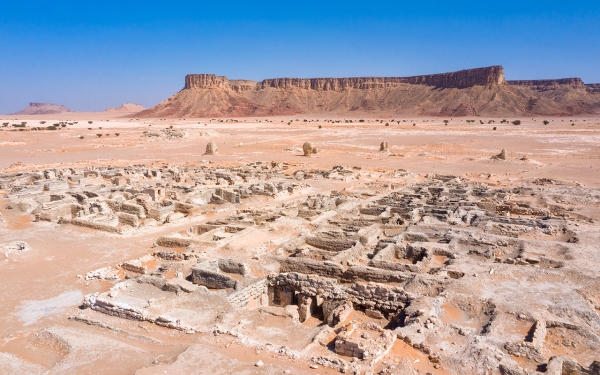
The Kingdom of Saudi Arabia's millennia-old antiquities are archaeological sites that hold both immovable and movable artifacts, whether located underground or underwater, all within the country's borders. Saudi Arabia boasts numerous historical sites and landmarks that weave the narrative of not only Saudi Arabia itself but also the broader history of the Arabian Peninsula. Saudi Arabia is recognized as one of the oldest human settlement areas and a crossroads for many ancient civilizations that have influenced human history. There are archaeological sites that date back to 1.3 million years BC.
Riyadh Province antiquities
The central region encompasses one of the oldest archaeological sites in Saudi Arabia, known as al-Magar civilization site. It is located between Wadi al-Dawasir, affiliated with Riyadh, and Tathlith, belonging to Aseer Province. Research teams have discovered statues of animals that were either domesticated by humans of that era or were used in their daily life and livelihood. These findings also include depictions of hunting and agricultural techniques. These include statues of sheep, goats, ostriches, dogs, falcons, fish, and horses. These date back to the New Stone Age, approximately nine thousand years ago.
To the southwest of Riyadh city lies the village of al-Faw, which was the capital of the First Kingdom of Kinda. It is one of the archaeological sites that served as an economic, religious, and cultural hub. Its distinctiveness stems from its location along the ancient trade route known as Najran-Gerra. The archaeological inscriptions in al-Faw reveal that it was the capital of the Kingdom of Kinda from the fourth century BC to the fourth century AD, in addition to its role as a significant trading point or station. Excavations at the site also revealed the presence of rare bronze sculptures, a series of frescoes, which are colorful paintings using plaster in their formation, and a massive bronze structure. Among the drawings is a portrait of one of the great figures of the Kingdom of Kinda, dating back to the first century BC. The figure is depicted with thick hair and is surrounded by two servants, representing a banquet scene.
Among the artifacts found in al-Faw is a piece named Lady of al-Faw, a bronze head of a woman from the first century BC. Additionally, two bronze statues were discovered. The first one is a statue of Hercules, an emperor of the Byzantine Empire, wielding a club in one hand while gripping the skin of a lion with the other. This piece is one of its kind worldwide, depicting Hercules in a post-forty age. The second statue is of the Egyptian mythological figure Harpocrates, wearing the double crown of the pharaohs. Crafted between the third century BC and the third century AD, this statue stands at a height of 25.3 cm.
The historical graves in the village of al-Faw serve as testimonies to ancient civilizations and kingdoms. They come in three types: collective family graves pertaining to families of political and social significance, graves of the nobility, and graves of common people.
Al-Madinah al-Munawarah antiquities
The governorate of al-Ula is located to the north of Al-Madinah al-Munawarah. It served as the capital of the Nabatean civilization around three hundred years BC. The antiques are manifested through a combination of archaeological sites, discoveries, and rock inscriptions adorning its mountains. Among them is the Hegra Historical City (Mada'in-Salih) in the al-Ula Province. The site contains around 111 tombs carved into the mountains, adorned on the outside with inscriptions and drawings indicative of those civilizations. It was registered as the first site in Saudi Arabia to be included in the UNESCO World Heritage Sites list.
Al-Ula also includes the city of Dadan, which was the capital of both the Kingdoms of Lihyan and Dadan. The history of the city dates back to the era of the Kingdom of Dadan, which settled the area in the late ninth and early eighth centuries BC, and to the Kingdom of Lihyan, which existed from the fifth and second centuries BC. It contains twelve rock-carved tombs and includes massive stone structures called rectangles. These structures, built in the form of large rectangles, have recently been classified as some of the oldest human artifacts in Saudi Arabia. Additionally, there are sculptures of recumbent lions that distinguish some of the tombs, which perhaps belonged to the elite of society or members of the ruling family at the time.
Tabuk Province antiquities
The discovered antiquities in the governorate of Tayma, affiliated with the Tabuk Province, date back to the Bronze Age, and the Midianites, Assyrian, Babylonian, Lihyanite, and Nabatean civilizations. Tayma was the operational capital of the Babylonian Kingdom during the reign of King Nabonidus. Among the archaeological sites is the Great Wall, a construction of stone and brick that surrounds the ancient city. It extends over a distance of eleven km and dates back to 1200 BC. The archaeological findings in the area indicate that they date back to the periods of the Midianites and Edomites at the beginning of the first millennium BC. The region also contains inscriptions from the sixth century BC, including Qasr al-Hamra, which was constructed in the mid-sixth century BC and used for religious rituals and as a residence. Additionally, Hadaj Well dates back to the sixth century BC. Another notable structure is al-Radm Palace, a massive construction called al-Abliq that dates back to the third century AD. Among the sites is Um Sarf, located to the south of Tayma. It is a cave within a mountain used for practicing religious rituals in prehistoric times. Its walls contain drawings of wild cattle.
Al-Bada'a Governorate includes archaeological sites, among them is the Well of al-Saidani and the Caves of Shu'ayb. These are facades of tombs carved into the mountains. The tombs comprise 360 individual and collective graves that date back to the Hellenistic period.
Najran Province antiquities
Najran experienced a long period of settlement at al-Ukhdood site. The ruins of al-Ukhdood were discovered in the village of al-Qabil on the southern bank of the Najran Valley. Evidence was also uncovered indicating human settlement sites dating back to the Mesolithic era, around fifty thousand years ago, such as the Hima Well. The well is located in the Hima Cultural Area, which was registered as the sixth archaeological site for Saudi Arabia by the UNESCO in 2021. The Hima site contains a rock inscription area that spans over 557 km² and includes 550 rock art panels featuring hundreds of thousands of inscriptions and rock drawings. These inscriptions are written in several ancient scripts, including Thamudic, Nabatean, Southern Musnad, Syriac, and Greek, in addition to early Arabic inscriptions that mark the beginnings of modern Arabic script. The antiquities at the site of Hima consist of inscriptions, structures, pile graves, and workshops for manufacturing stone tools, such as axes, chisels, and stone arrowheads.
Hail Province antiquities
The rock inscription sites in Jubbah and al-Shuwaymis in the Hail Province are among the important archaeological sites in Saudi Arabia. They contain about ten thousand carved images of hunting scenes, animals, and human figures that date back to ten thousand years BC. These sites are the fourth archaeological sites to be registered with the UNESCO in 2015. The history of Jubbah site dates back to the New Stone Age, seven thousand years ago. The site is known for its widespread rock art, which documented three distant historical periods of the region. The oldest period is known as the early Jubbah period, which dates back to seven thousand years ago. The engravings from this period were characterized by human and animal drawings. Whereas the second period, or the Thamudic period, was distinguished by drawings depicting camels, horses, ibex, and palm trees, in addition to Thamudic inscriptions. The sculptures of men riding camels represent the last period, which was the time when caravans carried goods.
Al-Shuwaymis site, located southwest of Hail, contains finely engraved artistic panels. The engravings include drawings of groups and individuals, and animals, such as dogs, donkeys, leopards, lions, and wild cattle. The engravings date back to three different periods: The first period is the end of the Stone Age between twelve and fourteen thousand years ago, characterized by life-sized drawings of humans and animals. The second period doesn't differ much from the first, except for the patination process, which appears less dense. The third period, which is the most recent and is called the Thamudic period, was characterized by drawings of ostriches and camels. One of the valleys contains a panel representing a group of camels, dating back to a later period of the Neolithic era, alongside Thamudic textual inscriptions consisting of names of individuals, deities, and commemorative phrases.
Hail antiquities include the Statue of the Suffering Man, an ancient sandstone statue renowned as one of Saudi Arabia's most famous relics. It has profound, sorrowful eyes, and its hand appears raised and clasped over the heart. It was discovered during archaeological surveys and inspections in al-Kahafah village, situated two hundred km south of the city of Hail.
The statue is approximately six thousand years old, dating back to the end of the New Stone Age. It is a rare piece of art due to its precise expressions. A number of international specialized archaeological studies and research have been conducted on it.
Eastern Province antiquities
The Eastern Province antiquities include the Thaj archaeological site, west of the city of Jubail. It contains the remains of a complete city surrounded by walls and four towers. It has five levels of human settlement dating back to the period between 500 and 300 BC. Among the famous finds is the statue of the Thaj girl, discovered as part of the Thaj treasure that included gold necklaces and adornments, a small statue of a girl, and two gold rings studded with red rubies. The statue of the girl dates back to the first century AD and is made of bitumen, iron, and lead. It stands at forty-six cm in height and was found in a tomb in 1998. Saudi scientists revealed that this tomb dates back two thousand years, corresponding to the Hellenistic period.
Jazan Province antiquities
Jazan is rich in archaeological sites that date back to various historical periods. Among them is the city of Either, located west of the governorate of Sabia, which dates back to the fourth century AD and was one of the famous Arab markets. Among the archaeological sites is the al-Sehi site, affiliated with the Deihmah Center and dating back to approximately three thousand years ago. The finds at the site consist of marine shells and a collection of broken pottery shards. Additionally, Wadi Matar in the south of Farasan Island includes rock facades with inscriptions and Himyarite writings. In the village of al-Qassar on Farasan Island, al-Kadmi site was found. This site harbors the remains of ancient structures constructed from large stones, along with fragments of stones bearing a striking resemblance to Roman columns.
Al-Jawf region antiquities
Al-Shuwayhatiya in al-Jawf region is among the oldest historical archaeological sites inhabited by humans in the Arabian Peninsula, dating back more than 1.3 million years BC. It is located about forty-five km north of Sakaka, the administrative capital of al-Jawf region, and extends in a large valley north of the village of al-Shuwayhatiya.
It dates back to the Oldowan era in the ancient Stone Age. Field survey teams revealed sixteen settlements where approximately two thousand pieces of stone tools were found, such as stone knives, hammers, arrowheads, and some multi-faceted and spherical tools.
Related quizzes
